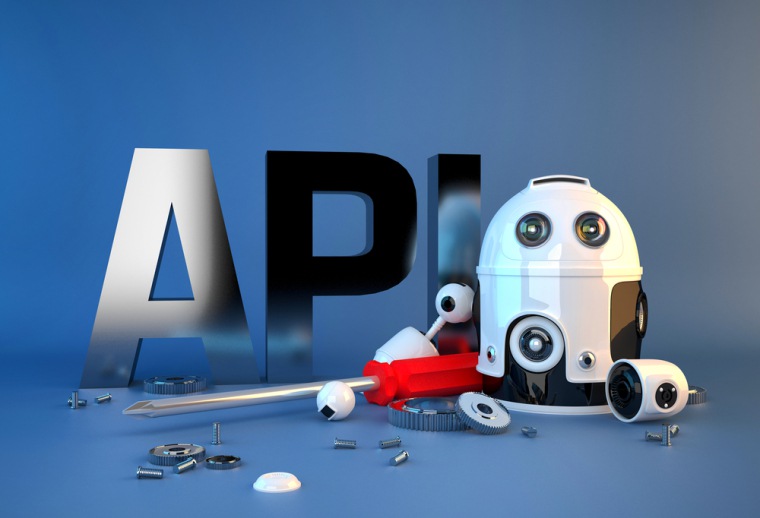There’s been much talk recently of the API economy. API stands for Application Programming Interface, and basically it represents the set of programming instructions and standards that allows one piece of software to communicate with and access the resources and services of another.
The history of collaborative APIs dates back to the turn of the millennium. In 2000 eBay announced the launch of its API initiative that would allow third-party companies to display eBay listings on their own websites. It would take several years to follow through however and Amazon was the real catalyst, building on its affiliates program and being the first major player to open up its API in 2002. Developers could pull information such as product reviews and wish lists into third-party applications and include live updated Amazon products on external sites. Since then the company has also launched APIs for its Amazon Web Services cloud platform.
The API revolution has taken some interesting and innovative turns in recent times – from the taxi booking service Uber, which has caused fury among cabbies worldwide, to Airbnb, a service that matches owners of houses and properties with short-term renters looking for an alternative to traditional accommodations.
And, perhaps unsurprisingly, social APIs are everywhere. The API economy is all about sharing and collaboration. This doesn’t mean it’s always altruistic, of course. There’s usually profit to be made on both sides, but the collaborative nature does make it a perfect fit for social media.
 Some of the most popular and important social media APIs include:
Some of the most popular and important social media APIs include:
Facebook Graph API
With well over a billion active monthly users, Facebook is not only the biggest social network worldwide, but also an invaluable mine of data and personal information. Facebook’s Graph API is the core of Facebook Platform and is designed to provide access to every object in Facebook’s database, including users, photos, videos, statuses, conversations, places, and their interlinked relationships with each other.
Developers who log in to the Graph API can use data to create a deeper, personalized experience for their own users.
Facebook authentication enables developers’ apps to interact with the Graph API on behalf of Facebook users, providing a single sign-on mechanism across web, mobile, and desktop apps.
Twitter Embedded Tweets
Twitter’s early policy of providing a relatively simple-to-use API ensured that a host of third-party apps quickly sprang up around the micro-blogging site. The Embedded Tweets tool allows you to take any tweet and embed it directly into the content of your article or website. These tweets are fully interactive, allowing viewers to follow the author, reply, retweet, and favorite directly from the external website.
YouTube Data API
According to the site itself, 100 hours of video are uploaded to YouTube every single minute. That’s a lot of footage, but by using YouTube Data API you can request and store info about videos you want to display on your site. Accessible data includes not just the video itself, but also important metadata like titles, tags, descriptions, and duration. The data API can be used in conjunction with YouTube Player APIs and the YouTube Analytics API to incorporate a more complete YouTube functionality into your own application.
Google+ API
Google first started testing its API for the search engine in 2002, enabling up to 1,000 automated searches. It has since released numerous APIs relating to various areas such as Google Maps, Google Wallet, and the Chrome web browser. It might not have the reach of Facebook, but the Google+ API can be used to tap into the platform’s own social graph and to integrate features such as cross-device sign-on into your site or app.
Social media APIs provide businesses with a new way to personalize their marketing campaigns and communicate with customers. By building social media features into your website – whether by the simple addition of plug-ins such as “like” or “follow” buttons or more in-depth functionality – you can allow your customers to leave feedback, interact, and communicate socially without having to leave the site or log in elsewhere.
You can also collect and display user-generated content, which can be extremely beneficial as the users themselves can create plenty of free material that might be interesting to a broader audience. In the case of user-generated content in a foreign language, a translation API can be used to facilitate communication. Translation APIs allow content management systems (Drupal, Joomla!, WordPress, etc.) to seamlessly interact with a translation platform to translate uploaded content.
As the API economy continues to grow, more and more companies look to open up their APIs in order to extend their own brand’s reach. The social media landscape is a fast-moving and constantly shifting one, but accessing the features of major platforms via their APIs is likely to continue to be a source of great opportunities, no matter what business you are in.
Image Credits
Featured Image: Kirill_M via Shutterstock
Image #1: Kirill_M via Shutterstock




